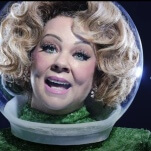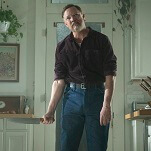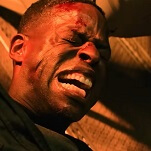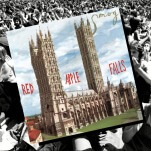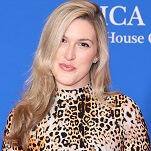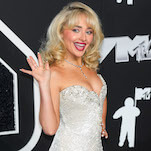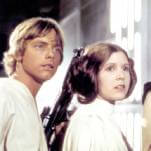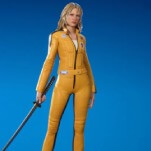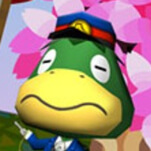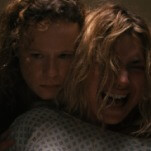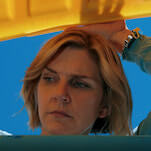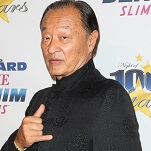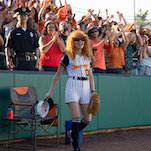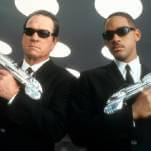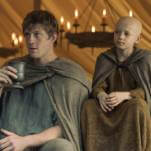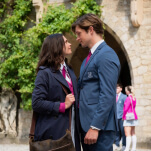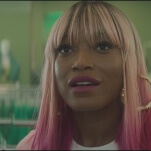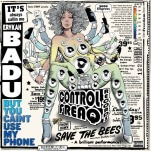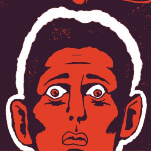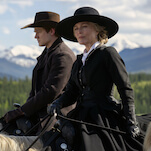10 episodes that show off Leave It To Beaver’s quiet innovation
With so many new series popping up on streaming services and DVD every day, it gets harder and harder to keep up with new shows, much less the all-time classics. With TV Club 10, we point you toward the 10 episodes that best represent a TV series, classic or modern. If you watch those 10, you’ll have a better idea of what that series was about, without having to watch the whole thing. These are not meant to be the 10 best episodes, but rather the 10 most representative episodes.
The title Leave It To Beaver conjures up images of a sterilized, safe 1950s that would have made a Ronald Reagan presidential campaign proud. The show has become so synonymous with a certain ideal of late-’50s and early-’60s America—a place where husbands worked and wives stayed home, where white cultural supremacy wasn’t questioned, and where father really did know best—that in some ways, it’s become a punchline. The easiest way to suggest rebellion against that sort of status quo is to bring up Ward and June Cleaver and their perfectly tidy, perfectly boring little lives.
Yet the series itself is one of the best sitcoms of its era and has been unfairly maligned, perhaps because it’s the most popular and enduring of TV’s early family sitcoms. (A better target for those wanting to mock the white-bread world of the ’50s would be The Donna Reed Show, but that series isn’t as well-known.) In fact, Leave It To Beaver was a surprisingly progressive show for its era, part of a movement in American popular art in the ’40s and ’50s that told stories about people living in a new superpower, uneasy about their wealth and comfort and considering not how to leave their children better off than they had been (since such a thing was a fait accompli for those born during the Depression) but rather how to make those children better people. Leave It To Beaver is a quietly moral series about the conflict between generations, and about parents trying to impart to their children deep truths in ways that will stick. Ward and June Cleaver aren’t just the prototypical father and mother of the ’50s; they’re the front line on the battle between the American Dream of the post-World War II era and the sorts of craven misbehavior that could so easily undo it.
What’s most remarkable about Leave It To Beaver today is just how well it holds up. Like most black-and-white sitcoms of the era, it looks much better than color shows from decades later, and while its storytelling innovations aren’t unique, they fit well within the current sitcom landscape of ever-expanding comedy universes. Mayfield, the small town the Cleaver family lives in, is a persistent universe, and while the four Cleavers—Ward and June and their boys Wally and the Beaver—are the only characters to appear in every episode, there are numerous recurring characters who return as the story dictates, from friends of the boys to neighbors and community fixtures who always have time to listen to the Beaver’s ramblings. In addition, as the boys grow up—and both grow significantly older over the course of the series’ six seasons—the storytelling grows up with them. Where first-season stories are about Beaver dealing with the sorts of scrapes and incidents little kids would be expected to get involved in, the final seasons deal with him navigating romantic minefields or learning how to handle a budget. Because the show’s stories and moral lessons grew up with the boys, it was able to keep telling new kinds of stories, meaning the series didn’t encounter the kind of exhaustion exhibited by most shows that amass more than 200 episodes.
The series is also full of wonderful performances and characters. Ken Osmond’s Eddie Haskell is simply one of the great TV characters, a smiling suck-up who bears a sociopathic soul. (It’s no wonder so many political and business leaders get compared to him.) Frank Bank’s Lumpy Rutherford is a cheerfully oblivious bully, able to be threatening but also weirdly sweet, while his father (played by Richard Deacon, better known as The Dick Van Dyke Show’s Mel Cooley) is the sort of nattering co-worker few would want to be saddled with. The series’ attention to casting and vivid characters extended to even the smallest of bit parts.
But its center was always the Cleaver family, one of the most functional in TV history. To watch the show now is to escape into that perfect little world and see parents and kids treating each other with mutual respect and love. Tony Dow’s Wally Cleaver is the older teenage brother every kid wants to have, the guy who’ll always be there when you have a question about navigating elementary school, while Jerry Mathers’ work as the Beaver is fine child acting. But it’s Hugh Beaumont and Barbara Billingsley as Ward and June who center the series. Caught between newfangled theories of child-rearing and their memories of how they were raised, Ward and June do their best but often outsmart themselves, launching elaborate attempts to teach their children lessons that Wally and Beaver often don’t comprehend. They have an easy, lived-in chemistry, one that suggests Ward and June are still deeply in love, even if that love mostly expresses itself through long evenings spent reading by the fire.
Here are 10 episodes of Leave It To Beaver that display the series’ timelessness and versatility. The list focuses primarily on the show’s first two seasons, which form the most “classic” idea of what the series was, but there are episodes worth watching in every season, and only the final one is truly hit-or-miss.
“The Haircut” (season one, episode four): Leave It To Beaver was almost never an uproarious series, but it could come up with a funny sight gag when it had to, and the look of Beaver’s head after he tries to give himself a haircut—and after Wally exacerbates the problem—points to a long tradition of making the kids on the show look ridiculous. Even though the series was very squarely focused on the Cleaver household at this point and hadn’t yet expanded its world, this is still an excellent example of Leave It To Beaver taking a very small, typical kid problem—Beaver keeps losing the money his parents give him to buy things—and building a story around it.
“Party Invitation” (season one, episode 15): The series was always a loosely plotted one. Most episodes were simply excuses for a collection of scenes that revolved around a central topic but left ample room for the characters to talk about other things, extending the show’s slice-of-life feel. The stories also rarely went exactly where viewers might expect them to go. Take this episode, in which Beaver is the only boy in his class invited to a girl’s party, and he’s reluctant to go. Ward and June force him to attend, but when he gets there, he finds solidarity with the girl’s father, a wonderful, one-scene character whose presence suggests the life bubbling in all corners of the show’s world.

